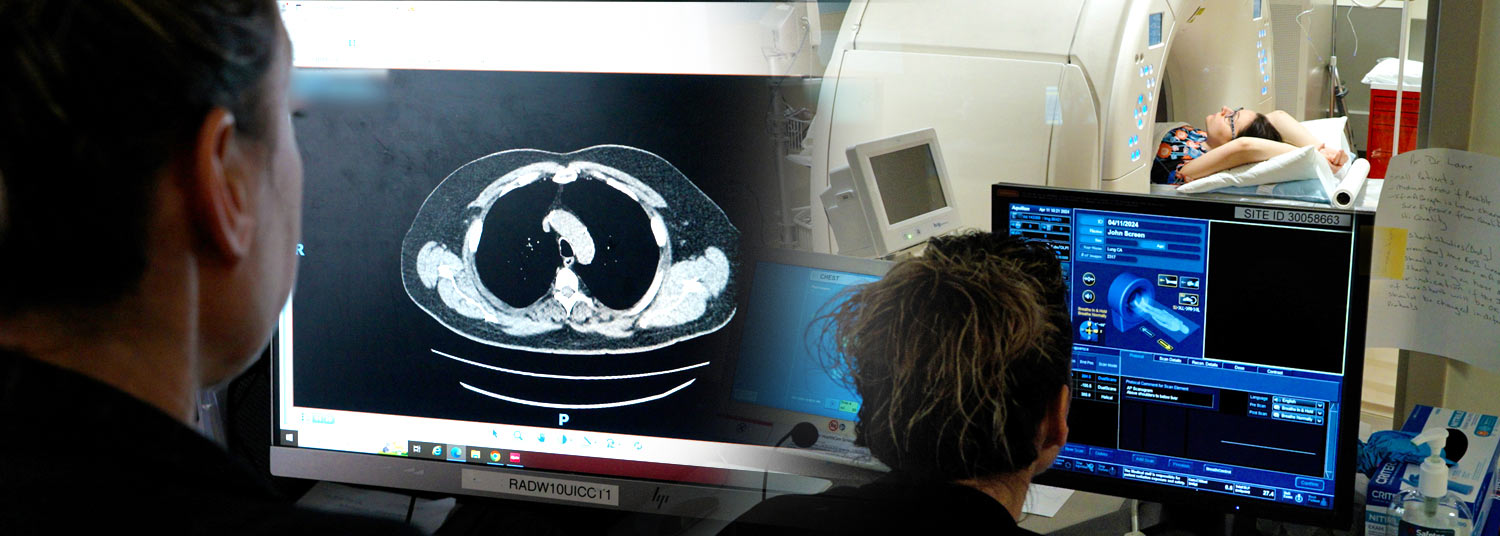April 16, 2024 | Deborah Kotz
Initiative Aims to Provide Greater Access to Lung Cancer Screening Across Underserved Maryland Communities
 With only a small percentage of Marylanders at high risk for lung cancer getting the recommended annual screening, the University of Maryland Marlene and Stewart Greenebaum Comprehensive Cancer Center (UMGCCC) today launched a new statewide effort to increase annual screenings.
With only a small percentage of Marylanders at high risk for lung cancer getting the recommended annual screening, the University of Maryland Marlene and Stewart Greenebaum Comprehensive Cancer Center (UMGCCC) today launched a new statewide effort to increase annual screenings.
The partnership also includes the University of Maryland Medical Center (UMMC), where the cancer center is located, the University of Maryland School of Medicine (UMSOM), the University of Maryland Medical System (UMMS), and the University of Maryland, Baltimore (UMB).
This public-private initiative, with up to $8 million in funding from AstraZeneca over the next five years, aims to enhance community-based cancer screening and early detection, leading to earlier diagnosis and more treatment options for patients.
“ We want to ensure that all eligible Maryland residents undergo timely and cost-effective lung cancer screening,” said Taofeek Owonikoko, MD, PhD, Executive Director of UMGCCC, a National Cancer Institute (NCI)-designated comprehensive cancer center within UMMC. He is also the Marlene and Stewart Greenebaum Professor of Oncology at UMSOM. “Early detection can have a bigger impact on a patient’s chances of survival from lung cancer than chemotherapy or immunotherapy, yet only a few are advocating for it.”
We want to ensure that all eligible Maryland residents undergo timely and cost-effective lung cancer screening,” said Taofeek Owonikoko, MD, PhD, Executive Director of UMGCCC, a National Cancer Institute (NCI)-designated comprehensive cancer center within UMMC. He is also the Marlene and Stewart Greenebaum Professor of Oncology at UMSOM. “Early detection can have a bigger impact on a patient’s chances of survival from lung cancer than chemotherapy or immunotherapy, yet only a few are advocating for it.”
The initiative aims to provide greater access to screening, particularly in underserved communities.
This partnership seeks to address:
- Strengthening and expanding lung cancer screening programs and tobacco cessation efforts across the State.
- Evaluating innovative and alternative approaches to improve early detection efforts among at-risk populations.
- Harnessing technology to identify patients at risk, and those eligible for screening.
- Ensuring timely and systematic sharing of scalable successes and lessons to drive public policy, and guide screening efforts in other cancer types beyond lung cancer and beyond Maryland.
- Establishing a “Center for Cancer Health Equity” and a personalized cancer early detection and interception clinic model, to drive research in cancer health disparities with an emphasis on Maryland minority and rural communities.
Resources for the Media:
Video B-Roll, Lung Cancer Screening Photos
Please download video and images to your computer before viewing them.
As part of the initiative, the University of Maryland Institute for Health Computing (UM-IHC) and the State Health Information Exchange, called CRISP, seeks to leverage cutting-edge technologies to better understand the large population of screening-eligible patients and to develop innovative, cost-effective models for improved cancer prevention.
In widely accepted guidelines, the US Preventive Services Task Force recommends annual lung cancer screening with a low-dose CT scan for individuals ages 50 to 80 who have smoked a pack a day for 20 years and currently smoke or have quit smoking within the past 15 years. Lung cancer is the leading cause of cancer deaths in Maryland as well as in the U.S. It is frequently detected in the later stages after it has already spread. Smoking is a key risk factor, including for people who no longer smoke. Exposure to carcinogens like radon, second-hand smoke, or excess air pollutants can also raise a person’s risk.
 While many Maryland residents are at high risk for developing lung cancer, very few are receiving screening services. Based on a preliminary analysis by AstraZeneca, Baltimore County, together with the city of Baltimore, ranks in the top counties in the U.S. for lung cancer risk. Ten additional counties in Maryland, including Montgomery, Howard, and Prince George’s, all have higher rates of lung cancer than the national average even though their smoking rates fall below the national rate.
While many Maryland residents are at high risk for developing lung cancer, very few are receiving screening services. Based on a preliminary analysis by AstraZeneca, Baltimore County, together with the city of Baltimore, ranks in the top counties in the U.S. for lung cancer risk. Ten additional counties in Maryland, including Montgomery, Howard, and Prince George’s, all have higher rates of lung cancer than the national average even though their smoking rates fall below the national rate.
“Low-dose CT screening can reduce lung cancer mortality by 20 percent in those at high risk, yet only about 3 percent of those who are eligible for screening are actually getting annual low-dose CT scans in Maryland, which is significantly lower than the national average,” said Dean Mark T. Gladwin, MD, who is the John Z. and Akiko K. Bowers Distinguished Professor and Dean of UMSOM, and Vice President for Medical Affairs at University of Maryland, Baltimore. “As a practicing pulmonary and critical care specialist, I have witnessed the devastating impact of lung cancer on my patients’ lives, and as Dean of our medical school’s faculty physicians, I embrace our unique opportunity and responsibility to bring lung cancer screening to all the citizens of Maryland.”
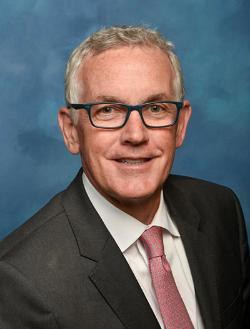 The low lung cancer screening rate of just 3 percent compares to an estimated 83 percent of women in Maryland, ages 50 to 74, who receive annual mammograms to screen for breast cancer, according to data from the NCI.
The low lung cancer screening rate of just 3 percent compares to an estimated 83 percent of women in Maryland, ages 50 to 74, who receive annual mammograms to screen for breast cancer, according to data from the NCI.
Addressing racial disparities in detecting and treating lung cancer will be a key part of this effort. Black patients with lung cancer are 15 percent less likely to be diagnosed early and are 16 percent less likely to survive five years after diagnoses compared to white patients, according to the latest data from the American Lung Association.
“The message is simple: Lung cancer screening saves lives,” said Bert W. O’Malley, MD, President and CEO of UMMC who is a practicing head and neck cancer surgeon. “It’s our single greatest weapon against this deadly condition. That’s why it’s so vitally important that we work to remove the barriers that prevent thousands of at-risk Marylanders from getting screened. This partnership will help improve the health and well-being of the community we serve.”
 Mohan Suntha, MD, MBA, President and CEO of UMMS, noted that UMMC and five member organization hospitals within UMMS currently offer low-dose CT lung cancer screening. “We are excited to have additional locations within the University of Maryland Medical System join this initiative, which will expand and integrate our existing community screening efforts. Because of the scale and reach of our system, we will be able to reach Marylanders statewide, particularly those in communities at greatest risk,” said Dr. Suntha, who is also the Marlene and Stewart Greenebaum Professor of Radiation Oncology.
Mohan Suntha, MD, MBA, President and CEO of UMMS, noted that UMMC and five member organization hospitals within UMMS currently offer low-dose CT lung cancer screening. “We are excited to have additional locations within the University of Maryland Medical System join this initiative, which will expand and integrate our existing community screening efforts. Because of the scale and reach of our system, we will be able to reach Marylanders statewide, particularly those in communities at greatest risk,” said Dr. Suntha, who is also the Marlene and Stewart Greenebaum Professor of Radiation Oncology.
The other five UMMS hospitals that offer low-dose CT lung cancer screening are University of Maryland Baltimore Washington Medical Center in Glen Burnie, University of Maryland St. Joseph Medical Center in Towson, University of Maryland Upper Chesapeake Medical Center in Bel Air, University of Maryland Capital Regional Medical Center in Largo, and University of Maryland Shore Regional Health in Easton.
A steering committee of academic, industry and community partners will be established to help guide the effort. Dr. Owonikoko will manage and coordinate the project. He previously served as a paid medical advisor to AstraZeneca. He has not served as a paid consultant to the company since beginning his position at UMGCCC. He has two investigator-initiated clinical trials supported by the company.
“AstraZeneca is committed to eliminating lung cancer as a cause of death and we know that achieving that bold ambition begins with early detection and diagnosis,” said Mohit Manrao, SVP and Head of U.S. Oncology at AstraZeneca. “We’re pleased to partner with the Greenebaum Comprehensive Cancer Center to expand critical services to at-risk Marylanders, especially those in underserved communities.”
After the initial launch of the lung cancer screening effort, officials plan to expand the project to include breast, cervical and colon cancer screening within a few years.
 “We want to bring everything that we learn through this partnership over the next five years to the wider oncology community, to say, ‘This is how we did it in Maryland. These are the lessons learned. If you want to do it, here is the recipe for you to do it,” said Dr. Owonikoko, a nationally recognized thoracic oncologist who specializes in treating patients with lung cancer. He was recently named a Cancer Equity Leader by the NCI.
“We want to bring everything that we learn through this partnership over the next five years to the wider oncology community, to say, ‘This is how we did it in Maryland. These are the lessons learned. If you want to do it, here is the recipe for you to do it,” said Dr. Owonikoko, a nationally recognized thoracic oncologist who specializes in treating patients with lung cancer. He was recently named a Cancer Equity Leader by the NCI.
About the University of Maryland Marlene and Stewart Greenebaum Comprehensive Cancer Center
The University of Maryland Marlene and Stewart Greenebaum Comprehensive Cancer Center is a National Cancer Institute-designated comprehensive cancer center in Baltimore. The center is a joint entity of the University of Maryland Medical Center and University of Maryland School of Medicine. It offers a multidisciplinary approach to treating all types of cancer and has an active cancer research program. It is ranked among the top cancer programs in the country.
About the University of Maryland School of Medicine
Now in its third century, the University of Maryland School of Medicine was chartered in 1807 as the first public medical school in the United States. It continues today as one of the fastest growing, top-tier biomedical research enterprises in the world -- with 46 academic departments, centers, institutes, and programs, and a faculty of more than 3,000 physicians, scientists, and allied health professionals, including members of the National Academy of Medicine and the National Academy of Sciences, and a distinguished two-time winner of the Albert E. Lasker Award in Medical Research. With an operating budget of more than $1.2 billion, the School of Medicine works closely in partnership with the University of Maryland Medical Center and Medical System to provide research-intensive, academic and clinically based care for nearly 2 million patients each year. The School of Medicine has nearly $600 million in extramural funding, with most of its academic departments highly ranked among all medical schools in the nation in research funding. As one of the seven professional schools that make up the University of Maryland, Baltimore campus, the School of Medicine has a total population of nearly 9,000 faculty and staff, including 2,500 students, trainees, residents, and fellows. The combined School of Medicine and Medical System (“University of Maryland Medicine”) has an annual budget of over $6 billion and an economic impact of nearly $20 billion on the state and local community. The School of Medicine, which ranks as the 8th highest among public medical schools in research productivity (according to the Association of American Medical Colleges profile) is an innovator in translational medicine, with 606 active patents and 52 start-up companies. In the latest U.S. News & World Report ranking of the Best Medical Schools, published in 2023, the UM School of Medicine is ranked #10 among the 92 public medical schools in the U.S., and in the top 16 percent (#32) of all 192 public and private U.S. medical schools. The School of Medicine works locally, nationally, and globally, with research and treatment facilities in 36 countries around the world. Visit medschool.umaryland.edu
About the University of Maryland Medical Center
The University of Maryland Medical Center (UMMC) is comprised of two hospital campuses in Baltimore: the 800-bed flagship institution of the 11-hospital University of Maryland Medical System (UMMS) and the 200-bed UMMC Midtown Campus. Both campuses are academic medical centers for training physicians and health professionals and for pursuing research and innovation to improve health. UMMC's downtown campus is a national and regional referral center for trauma, cancer care, neurosciences, advanced cardiovascular care, and women's and children's health, and has one of the largest solid organ transplant programs in the country. All physicians on staff at the downtown campus are clinical faculty physicians of the University of Maryland School of Medicine. The UMMC Midtown Campus medical staff is predominantly faculty physicians specializing in a wide spectrum of medical and surgical subspecialties, primary care for adults and children and behavioral health. UMMC Midtown has been a teaching hospital for 140 years and is located one mile away from the downtown campus. For more information, visit www.umm.edu.
About the University of Maryland Medical System
The University of Maryland Medical System (UMMS) is an academic private health system, focused on delivering compassionate, high-quality care and putting discovery and innovation into practice at the bedside. Partnering with the University of Maryland School of Medicine, University of Maryland School of Nursing and University of Maryland, Baltimore who educate the state’s future health care professionals, UMMS is an integrated network of care, delivering 25 percent of all hospital care in urban, suburban and rural communities across the state of Maryland. UMMS puts academic medicine within reach through primary and specialty care delivered at 11 hospitals, including the flagship University of Maryland Medical Center, the System’s anchor institution in downtown Baltimore, as well as through a network of University of Maryland Urgent Care centers and more than 150 other locations in 13 counties. For more information, visit www.umms.org
Contact
Karen Warmkessel
410-328-8919 or (410) 404-1532 (cell)
Kwarmkessel@umm.edu
Deborah Kotz
410-706-4255 or 617-898-7955 (cell)
dkotz@som.umaryland.edu
Related stories

Tuesday, October 01, 2024
Cancer Patients Who Experience Cognitive Decline After Radiation Treatment for Brain Metastases May Regain Full Neurocognitive Function, New Study Suggests
Nearly 40 percent of cancer patients who experienced memory loss, brain fog and other cognitive difficulties after radiation treatment for brain metastases regained full neurocognitive function within six months, according to a new analysis by radiation oncology researchers at the University of Maryland Greenebaum Comprehensive Cancer Center (UMGCCC).

Friday, July 12, 2024
Study: Living in Disadvantaged Neighborhoods Influences Stress-Related Genes, Which May Contribute to Aggressive Prostate Cancer in African American Men
Those living in disadvantaged neighborhoods have significantly higher activity of stress-related genes, new research suggests, which could contribute to higher rates of aggressive prostate cancer in African American men. The study, which was co-led by the University of Maryland School of Medicine (UMSOM) and Virginia Commonwealth University (VCU), was published today in JAMA Network Open.
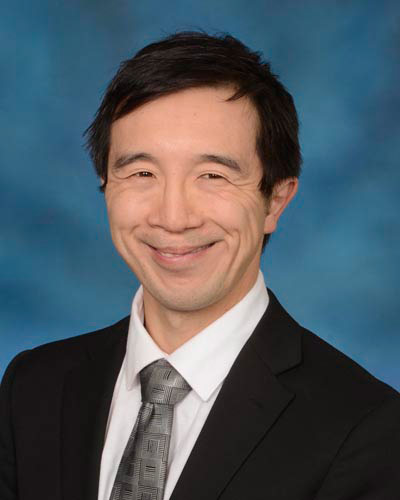
Thursday, October 10, 2019
UM School of Medicine Researchers Announce Promising Early Results from Immunotherapy Study on High-Risk Soft Tissue Sarcoma
A combination of two immunotherapy drugs and radiation prior to surgery could offer a potential new treatment for soft tissue sarcomas, a rare type of cancer, according to University of Maryland School of Medicine (UMSOM) researchers who presented their early results this week at the annual Musculoskeletal Tumor Society (MSTS) meeting in Portland, OR.
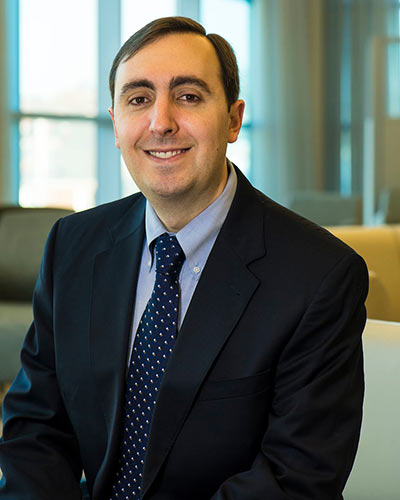
Thursday, August 10, 2017
Study Finds That Proton-Beam Therapy is Safe for Treating an Aggressive Type of Lung Cancer
Proton-beam radiotherapy is safe and appears to be effective in treating some cases of small cell lung cancer (SCLC), an aggressive cancer that accounts for about 10 to 15 percent of all lung cancers, according to a new study published online in the journal Cancer.
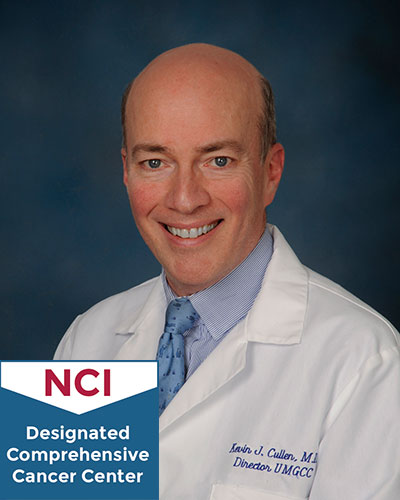
Tuesday, May 31, 2016
University of Maryland Greenebaum Cancer Center Earns National Cancer Institute’s Highest Designation
The University of Maryland Marlene and Stewart Greenebaum Cancer Center has been awarded the National Cancer Institute’s highest designation as a Comprehensive Cancer Center. The prestigious distinction recognizes the cancer center’s high caliber of scientific leadership and robust programs in basic, clinical and population science research, placing it in the top tier of cancer centers nationwide. The new name of the center is the University of Maryland Marlene and Stewart Greenebaum Comprehensive Cancer Center (UMGCCC).

